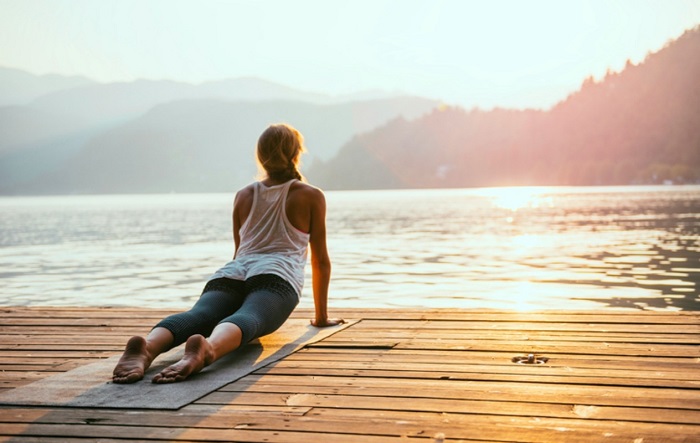Deciding to get started with yoga is not an easy thing to do. After all, it requires a lot of courage to get up from your couch and roll out the mat. Not to mention how in today’s busy world it can be hard to dedicate part of your valuable time to developing a new hobby. That’s why many people choose practising yoga at home, which saves time, energy and money, as opposed to opting for studio lessons. If you’re new to this, you should consider the following important tips.
Learn from the Experts
Like any physical activity, before you get started with yoga, it’s important to have a good visual demonstration of how certain movements are properly performed. Otherwise, you’re risking getting injured, and your yoga sessions won’t have the much desired effect. The downside of practising yoga at home is that there’s no instructor to give you guidance. Luckily, there are many resources to help you figure out the basics of yoga on your own. For instance, you can buy an illustrated book on yoga or a beginner yoga DVD from a certified yoga teacher. DVDs are great for practising at home as they also provide verbal motivation to help you make the most out of your session.
Start Slowly
When you’re new to yoga, there’s no need to dive into a 40-minute session from the get-go. The first few sessions, start with just 15 minutes or 20 if you’re feeling especially frisky. You’ll be more likely to stay committed to your yoga routine if it doesn’t feel too overwhelming. And don’t push yourself to do more poses. A few poses done right is a hundred times more beneficial than rushing through a dozen. Pay attention to the sequence moves in each pose, and rewind the video or the beginner yoga DVD if you feel like you’ve missed something.

Get Good Props
The must-have piece for any yoga practice, regardless of whether you’re a beginner or an experienced yogi, is the mat. A yoga mat is necessary as it provides you with cushioning and creates traction for your feet and hands so you don’t slip. Since as a beginner you probably haven’t mastered the sense of balance and gained the strength needed in yoga, you could benefit most from props like bolsters and cushions that will provide you with the needed support and will help you position your body the right way.
Listen to Your Body
The best advice when getting started with yoga is to be aware of your body’s limits. If a certain pose makes you sore in the beginning, try it in some of your next sessions. And remember that some days you will feel better and some days you will lack stamina, so arrange your sessions according to how your body feels. Plus, when you’re practising at home it’s easy to go back to some of the earlier poses in the beginner yoga DVD that you couldn’t quite master and see whether you can perform them now that you have gained more experience.